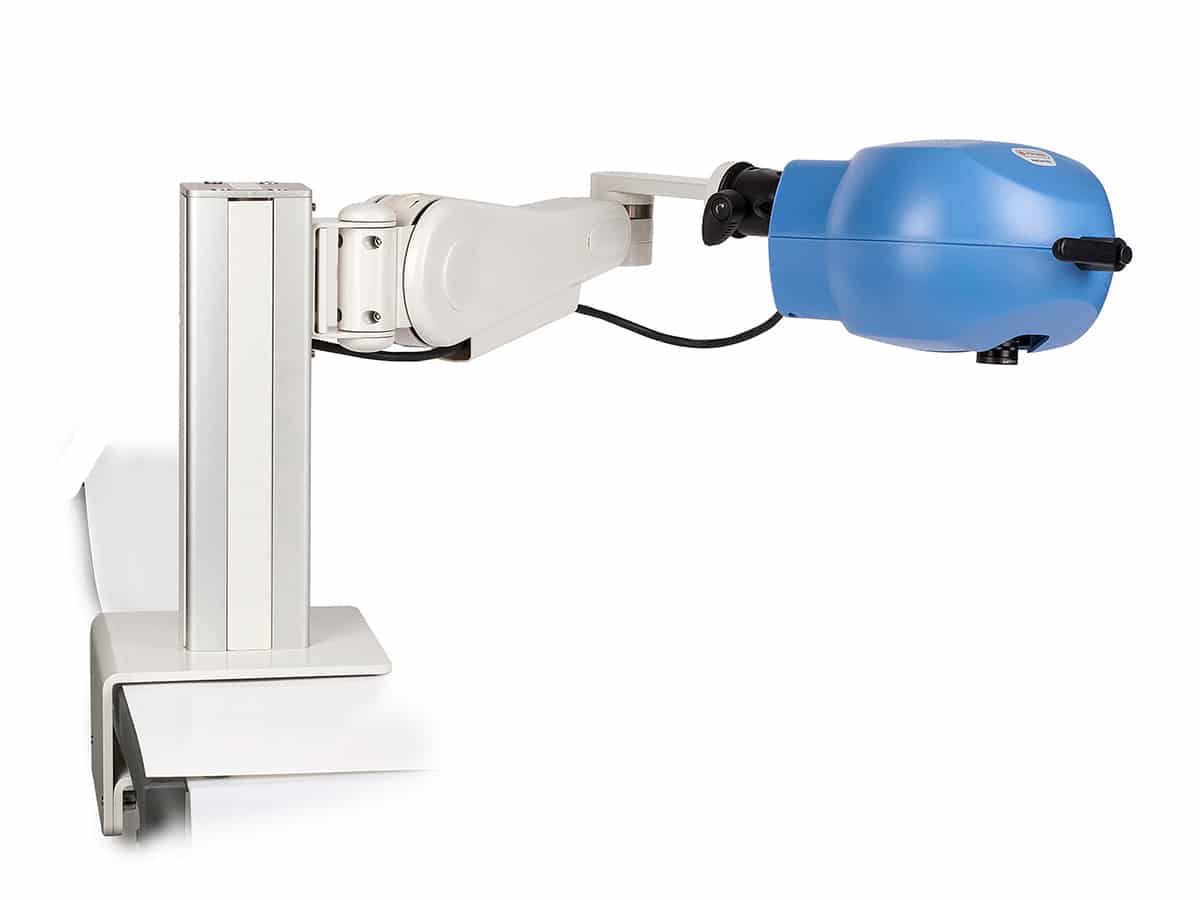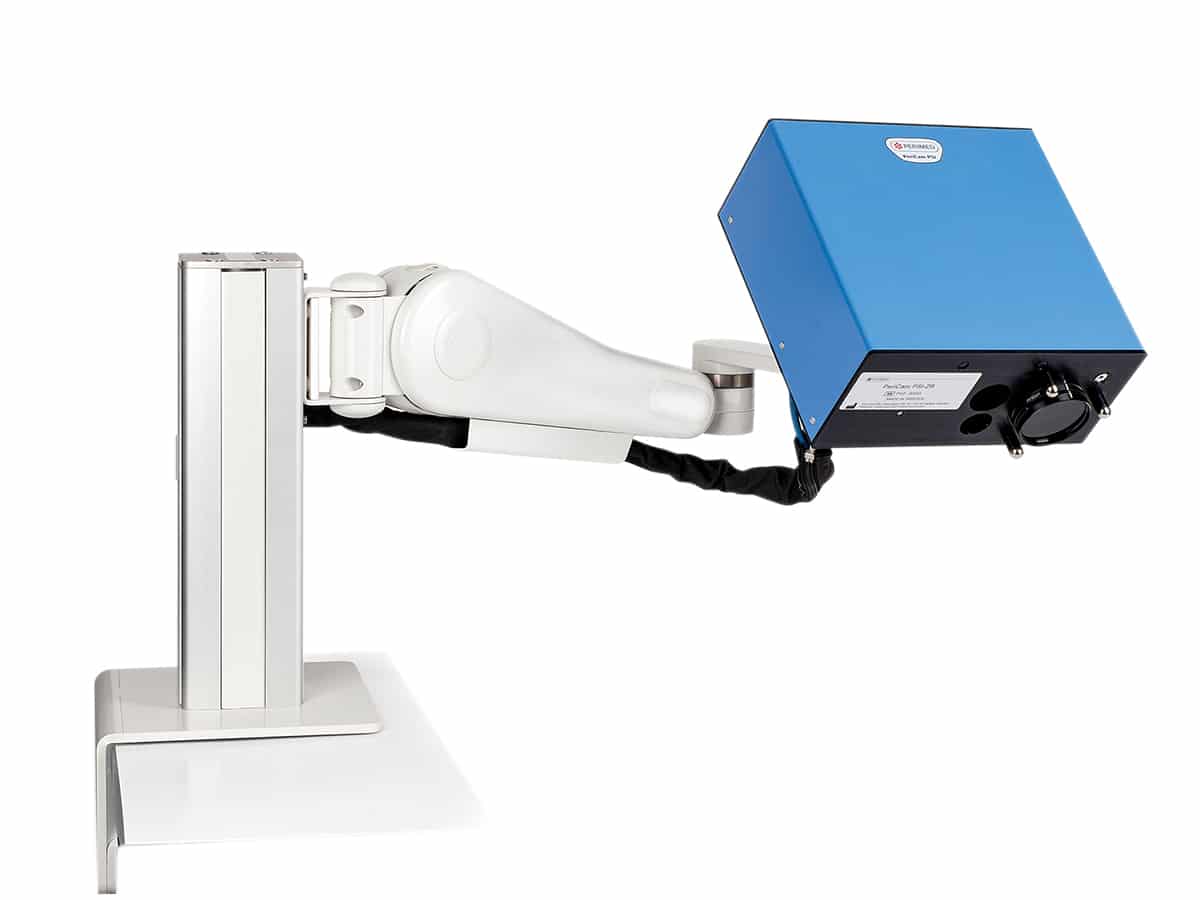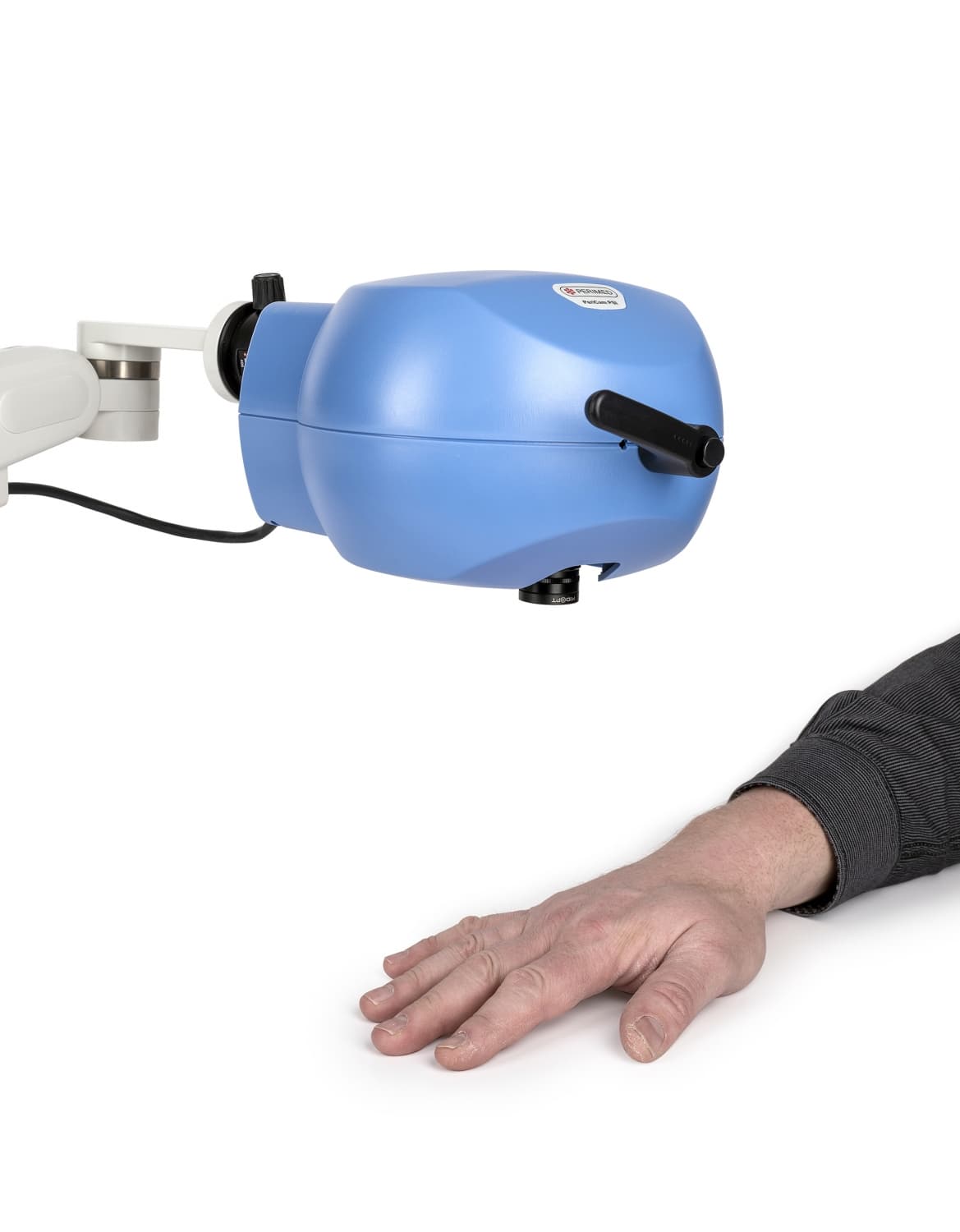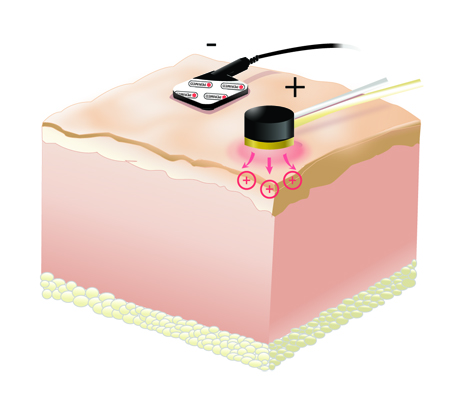Systemic Sclerosis
![]()
Systemic sclerosis (SSc) or scleroderma is a progressive autoimmune disorder characterized by changes in the texture and appearance of the skin caused by increased connective tissues buildup. The disease can affect many other parts of the body, but often only affects the skin in the early stages or limited forms of the disease. In 2013, the American College of Rheumatology (ACR) and the European League Against Rheumatism (EULAR) published and enhanced the classification guidelines1van den Hoogen F, Khanna D, Fransen J, Johnson SR, Baron M, Tyndall A, et al. 2013 classification criteria for systemic sclerosis: an American college of rheumatology/European league against rheumatism collaborative initiative. Ann Rheum Dis. 2013;72:1747-55. for SSc, which give more sensitivity to the early and limited cutaneous forms of the disease. Besides thickening of skin on the fingers, there are several factors linked to the (micro-) circulation that are involved in the new classification. One is the damage of the capillaries, that can be detected by nailfold video-capillaroscopy (NVC) and that improved the specificity and sensitivity of the 2013 EULAR/ACR SSc classification criteria.
In recent years, there have been several studies indicating that laser speckle contrast analysis (LASCA) can be a valuable technique for further SSc research and as a diagnostic tool in the classification of the disorder.2Ruaro B, Sulli A, Smith V, Pizzorni C, Gallo M, Cutolo M. speckle contrast analysis: a new method to evaluate peripheral blood perfusion in systemic sclerosis patients. Ann Rheum Dis. 2014; 73: 1181-5.,3Ruaro B, Sulli A, Smith V, Paolino S, Pizzorni C, Cutolo M. Short-term follow-up of digital ulcers by laser speckle contrast analysis in systemic sclerosis patients. Microvasc Res. 2015;101:82-5.
Several studies also show the technique to be useful for assessing and monitoring the effect of treatment.4Ruaro B, Paolino S, Pizzorni C, Cutolo M, Sulli A. Assessment of treatment effects on digital ulcer and blood perfusion by laser speckle contrast analysis in a patient affected by systemic sclerosis. Reumatismo. 2017;69:134-136.,5Bo Chen; Xiaojun Wang; Xiao Long; Mingzi Zhang; Jiuzuo Huang; Nanze Yu; Jing Xu, Supportive Use of Adipose-Derived Stem Cells in Cell-Assisted Lipotransfer for Localized Scleroderma, Plastic and Reconstructive Surgery. 141(6):1395–1407 One way to study the effect of locally administered drugs is by using iontophoresis in combination with LASCA.6M Roustit, F Gaillard-Bigot, S Blaise, F Stanke-Labesque, C Cracowski, C Seinturier, J-F Jourdil, B Imbert, PH Carpentier and J-L Cracowski, Cutaneous Iontophoresis of Treprostinil in Systemic Sclerosis: A Proof-of-Concept Study, Clin Pharmacol Ther. 2014 Apr;95(4):439-45.
Recommended products: PSI NR, PSI Z and Perilont.
Perilont micropharmacology system
Iontophoresis is a technique to transport charged molecules or drugs across a tissue barrier. Combined with LASCA, iontophoresis is a valuable tool for studying the effect of locally administered drugs on systemic sclerosis patients.
References:
- van den Hoogen F, Khanna D, Fransen J, Johnson SR, Baron M, Tyndall A, et al. 2013 classification criteria for systemic sclerosis: an American college of rheumatology/European league against rheumatism collaborative initiative. Ann Rheum Dis. 2013;72:1747-55.
- Ruaro B, Sulli A, Smith V, Pizzorni C, Gallo M, Cutolo M. speckle contrast analysis: a new method to evaluate peripheral blood perfusion in systemic sclerosis patients. Ann Rheum Dis. 2014; 73: 1181-5.
- Ruaro B, Sulli A, Smith V, Paolino S, Pizzorni C, Cutolo M. Short-term follow-up of digital ulcers by laser speckle contrast analysis in systemic sclerosis patients. Microvasc Res. 2015;101:82-5.
- Ruaro B, Paolino S, Pizzorni C, Cutolo M, Sulli A. Assessment of treatment effects on digital ulcer and blood perfusion by laser speckle contrast analysis in a patient affected by systemic sclerosis. Reumatismo. 2017;69:134-136.
- Bo Chen; Xiaojun Wang; Xiao Long; Mingzi Zhang; Jiuzuo Huang; Nanze Yu; Jing Xu, Supportive Use of Adipose-Derived Stem Cells in Cell-Assisted Lipotransfer for Localized Scleroderma, Plastic and Reconstructive Surgery. 141(6):1395–1407
- M Roustit, F Gaillard-Bigot, S Blaise, F Stanke-Labesque, C Cracowski, C Seinturier, J-F Jourdil, B Imbert, PH Carpentier and J-L Cracowski, Cutaneous Iontophoresis of Treprostinil in Systemic Sclerosis: A Proof-of-Concept Study, Clin Pharmacol Ther. 2014 Apr;95(4):439-45.
- Ruaro B, Sulli A, Smith V, Pizzorni C, Gallo M, Cutolo M. speckle contrast analysis: a new method to evaluate peripheral blood perfusion in systemic sclerosis patients. Ann Rheum Dis. 2014; 73: 1181-5.
- Ruaro B, Sulli A, Pizzorni C, Paolino S, Smith V, Cutolo M. Correlations between skin blood perfusion values and nailfold capillaroscopy scores in systemic sclerosis patients. Microvasc Res. 2016;105:119-24.
Case example:
University of Genova – Italy, University of Ghent – Belgium
Maurizio Cutolo (University of Genova – Italy), Barbara Ruaro (University of Genova – Italy), Vanessa Smith (University of Ghent – Belgium)
InLASCA analyses the peripheral blood perfusion and gives a value of its intensity. Our recent study performed using LASCA showed significantly lower blood perfusion in SSc patients than in healthy subjects at the level of the fingertips, periungual areas, and palms of the hands, but not at face level7Ruaro B, Sulli A, Smith V, Pizzorni C, Gallo M, Cutolo M. speckle contrast analysis: a new method to evaluate peripheral blood perfusion in systemic sclerosis patients. Ann Rheum Dis. 2014; 73: 1181-5. ,8Ruaro B, Sulli A, Pizzorni C, Paolino S, Smith V, Cutolo M. Correlations between skin blood perfusion values and nailfold capillaroscopy scores in systemic sclerosis patients. Microvasc Res. 2016;105:119-24.
Please fill in the form to get more information
Disclaimer: It is possible that the products on the Perimed website may not be cleared for sale in all markets.






